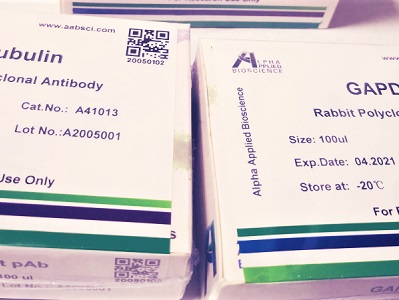

Caspase-9 mouse mAb(3-20)
Cat :A11623
-
Source
Mouse
-
Applications
WB,IHC,IF,IP
-
Reactivity
Human,Mouse,Rat,chicken
-
Dilution
WB: 1:1000-5000 IP:1:200 IF 1:200 IHC 1:50-300
-
Storage
-20°C/1 year
-
Specificity
The antibody detects endogenous Caspase 9 protein.
-
Source/Purification
The antibody was affinity-purified from mouse ascites by affinity-chromatography using specific immunogen.
-
Immunogen
Synthetic Peptide of Caspase 9
-
Uniprot No
P55211
-
Alternative names
CASP9; MCH6; Caspase-9; CASP-9; Apoptotic protease Mch-6; Apoptotic protease-activating factor 3; APAF-3; ICE-like apoptotic protease 6; ICE-LAP6
-
Form
PBS, pH 7.4, containing 0.5%BSA, 0.02% sodium azide as Preservative and 50% Glycerol.
-
Clonality
Monoclonal
-
Isotype
IgG
-
Background
caspase 9(CASP9) Homo sapiens This gene encodes a member of the cysteine-aspartic acid protease (caspase) family. Sequential activation of caspases plays a central role in the execution-phase of cell apoptosis. Caspases exist as inactive proenzymes which undergo proteolytic processing at conserved aspartic residues to produce two subunits, large and small, that dimerize to form the active enzyme. This protein can undergo autoproteolytic processing and activation by the apoptosome, a protein complex of cytochrome c and the apoptotic peptidase activating factor 1; this step is thought to be one of the earliest in the caspase activation cascade. This protein is thought to play a central role in apoptosis and to be a tumor suppressor. Alternative splicing results in multiple transcript variants. [provided by RefSeq, May 2013],
-
Other
CASP9, Caspase-9
-
Mol.Wt (Da)
46281
-
Concentration
1 mg/ml
| Product | Reactivity | Applications | Conjugation | Catalog | Images |
|---|
-
 400-836-3211
400-836-3211
-
 support@aabsci.com
support@aabsci.com
-
β-actin rabbit pAb ...... >
-
β-actin rabbit pAb(A284) ...... >
-
Plant-actin rabbit pAb ...... >
-
β-tubulin mouse mAb(M7) ...... >
-
GAPDH mouse mAb(2B8) ...... >
-
GAPDH mouse mAb(PT0325) ...... >
-
Histone H3 rabbit pAb ...... >
-
Histone H3 rabbit pAb ...... >
-
COX IV mouse mAb(6C8) ...... >
-
GFP-Tag mouse mAb(1G6) ...... >
-
HA-Tag mouse mAb(1B10) ...... >
-
mCherry-Tag mouse mAb(6B3) ...... >










 400-836-3211
400-836-3211
